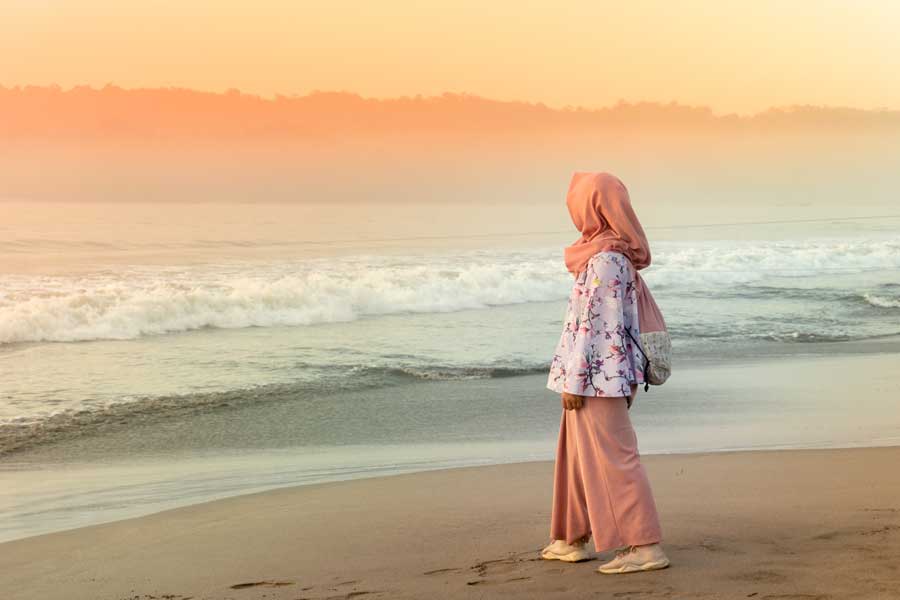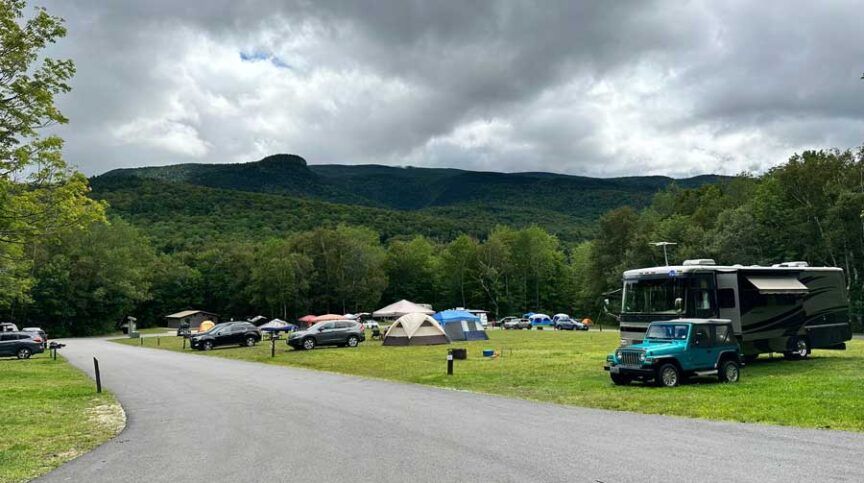“Go back to your own country!” the man shouted as he passed me on the street. Instinctively, I looked around to see whom he was addressing. Then I remembered that I’d recently started wearing a hijab, and the fact that I now covered my hair with a scarf was apparently enough to provoke a stranger’s assumptions about my citizenship and trigger irrational anger, and even verbal harassment. That incident happened nearly 23 years ago, but it’s still fresh in my memory. It was one of my first experiences with Islamophobia and the first time I felt like a foreigner in my own homeland.
“You’re in America now. Dress like an American.” These words were scribbled on an anonymous note and shoved under my best friend’s windshield wipers. Recounting the story to me, my friend chuckled wryly. “My dress is from Macy’s, and my scarf is from Old Navy. I’m pretty sure my clothes are American.” Unlike me who grew up white and Christian, my friend endured bigotry from an early age as the only brown-skinned Muslim girl in a predominantly white neighborhood. That anonymous note was just one of many injustices she’d suffered over the years.
Though our childhoods were different in some ways, my friend and I were both born and raised in the United States, and we are culturally American. At the same time, we are proud Muslims who choose to dress modestly and cover our hair in accordance with our religion. Though at times we’ve been made to feel like we don’t belong, we know that this is our own country, and we do dress like Americans. In fact, when you think about it, in many ways hijab is quintessentially American. Hijab is American? How?
Religious Liberty
The Founding Fathers took many measures to separate church from state. From the very beginning, the United States has championed religious liberty. As historian Jill Lepore writes in her book. These Truths: A History of the United States, “The rights established in the Bill of Rights were also extraordinary. Nearly every English colony in North America had been settled with an established religion . . . So far from establishing a religion, the Constitution doesn’t even mention ‘God,’ except in naming the date. . . At a time when all but two states required religious tests for office, the Constitution prohibited them. At a time when all but three states still had an official religion, the Bill of Rights forbade the federal government from establishing one. Most Americans believed . . . that religion can only thrive if it is not part of government, and that a free government can only thrive if it is not part of religion.”
The First Amendment forbids Congress from promoting one religion over others and prevents the government from interfering with a person’s beliefs or religious practices. So, every time a Muslim woman openly wears Islamic clothing, she is exemplifying and enjoying a fundamental American right. This same right allows a Jewish man to wear a yarmulke, a Catholic nun to wear a habit and veil, and a Buddhist monk to don a robe. Unlike France, for instance, which has banned visible religious symbols in its public schools, the United States allows its citizens to practice their faith openly, wherever they are. In addition, The Civil Rights Act of 1964 prohibits employers from discriminating on the basis of religion. These are liberties that Americans of any faith should not take for granted. Every time we see someone wearing a symbol of their religion – including a hijab– we should feel grateful and united, not hostile or divided.
Deep Muslim Roots
Muslims are not newcomers or interlopers in the United States. We have been present in this land for at least 500 years and are an integral part of the fabric of our nation. According to historian Sam Haselby, “By 1503, we know that Muslims themselves, from West Africa, were in the New World. Muslims thus arrived in America more than a century before the Virginia Company founded the Jamestown colony in 1607. Muslims came to America more than a century before the Puritans founded the Massachusetts Bay Colony in 1630. Muslims were living in America not only before Protestants, but before Protestantism existed. After Catholicism, Islam was the second monotheistic religion in the Americas.” Haselby adds, “Historically, Muslims are Americans, as originally American as Anglo-Protestants. The popular misunderstanding, even among educated people, that Islam and Muslims are recent additions to America tells us important things about how American history has been written.”
We must also remember that many enslaved Africans were Muslims. Their bloodlines and their influence on our culture continue to this day. Historian Dr. Sylviane Diouf writes, “Estimates vary, but [Muslims] were at least 900,000 out of the 12.5 million Africans taken to the Americas. Among the 400,000 Africans who spent their lives enslaved in the United States, tens of thousands were Muslims.”
Most of those enslaved people were forced to abandon their Islamic practices, but some found ways to preserve their faith, at great personal risk. According to an article in The Conversation, “Historian Sylviane Diouf explains how despite such efforts, many slaves retained aspects of their customs and traditions, and found new, creative ways to express them. Diouf argues that blues music, one of the quintessential forms of American culture, can trace its origins to Muslim influences from the slave era.”
Future Growth
While Muslims currently make up a little over 1% of the population in the U.S., our numbers are growing exponentially. The Pew Research Center “estimates that there were about 3.45 million Muslims of all ages living in the U.S. in 2017, and that Muslims made up about 1.1% of the total U.S. population. By 2040, Muslims will replace Jews as the nation’s second-largest religious group after Christians. And by 2050, the U.S. Muslim population is projected to reach 8.1 million, or 2.1% of the nation’s total population — nearly twice the share of today.”
Clearly Muslims are a rapidly-growing demographic, and in many ways that is good news for the United States. Because Islam requires high standards of behavior, sincere, practicing Muslims will always strive to be excellent neighbors, colleagues, citizens, and friends. “About seven-in-ten Muslims (69%) say working for justice and equality in society is essential to what it means to be Muslim, and nearly as many (62%) say the same about protecting the environment,” according to the Pew Research Center.
Far from being anti-American, Muslims in the U.S. are proud of their faith and their nationality. “Muslim Americans overwhelmingly embrace both the ‘Muslim’ and ‘American’ parts of their identity,” reports another Pew Research poll. “For instance, the vast majority of U.S. Muslims say they are proud to be American (92%), while nearly all say they are proud to be Muslim (97%). Indeed, about nine-in-ten (89%) say they are proud to be both Muslim and American.”
Stronger When United
Most people are not so bigoted that they would shout at a Muslim on the street or leave demeaning notes on their windshield. However, there are many Americans who consider themselves open minded and tolerant, yet still make negative assumptions – even subconsciously – when they see a Muslim, especially one wearing a hijab. While Muslim women don’t need the approval or validation of strangers, I do hope this essay might open some eyes and hearts. After all, we live together in this nation, and we are stronger when we are united.
Muslims are a fundamental, positive part of this country’s past, present, and future. Those of us who wear a hijab are exercising our right to religious freedom. It is a private, voluntary act of worship that is visible to the public, and we are grateful that our Constitution protects us. Rather than inspiring negativity, xenophobia, and misconceptions, our hijab should remind our fellow citizens of the rich diversity, the unique and precious religious liberty, and the meaningful Islamic roots of this nation. Hijab is American. This is our country, too.





